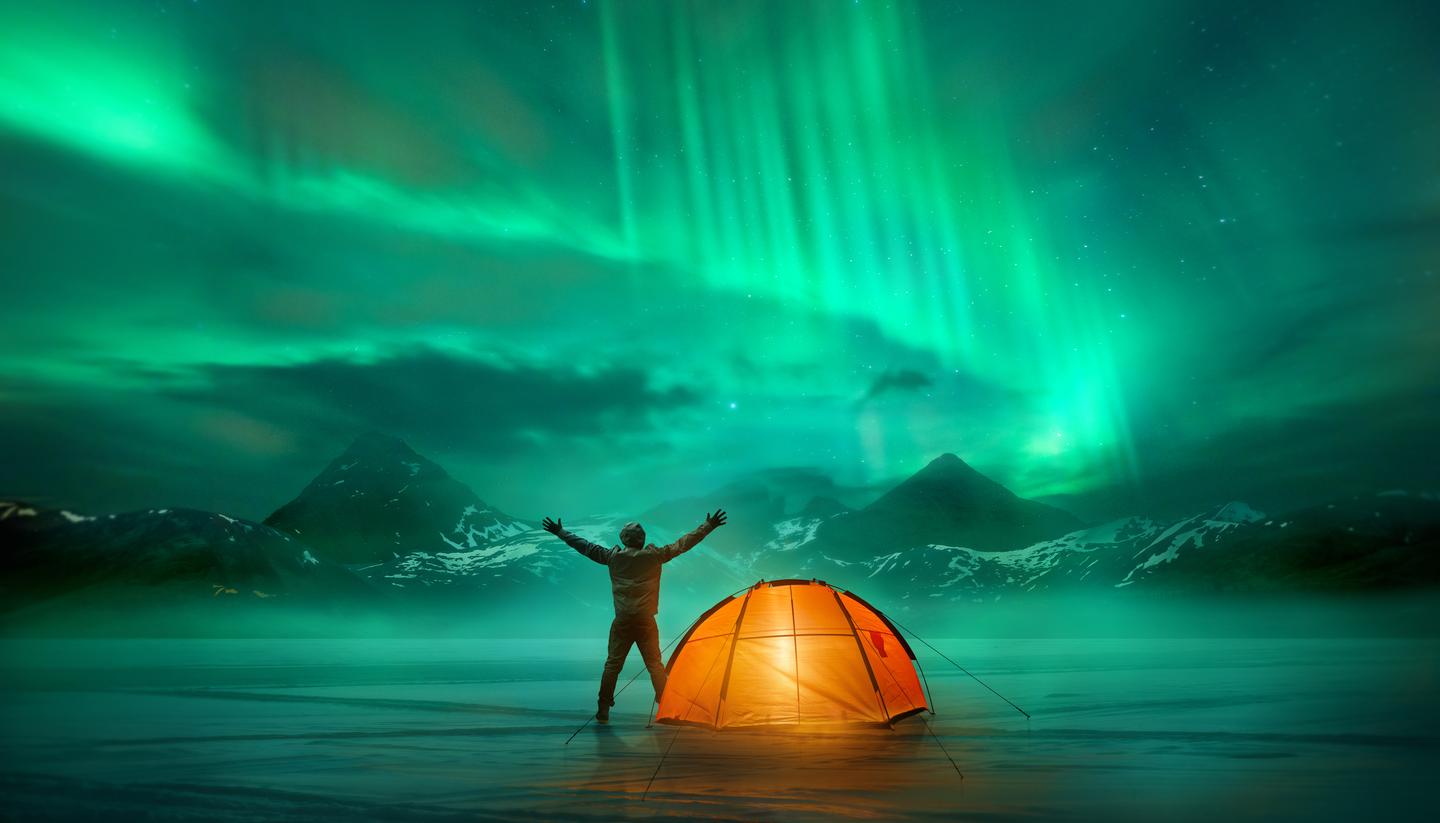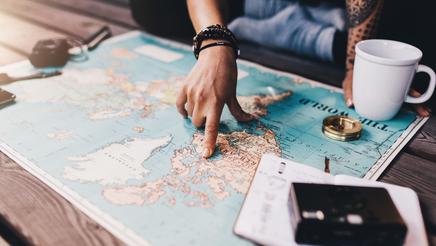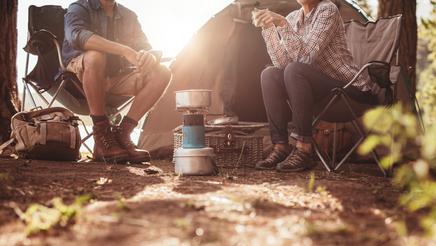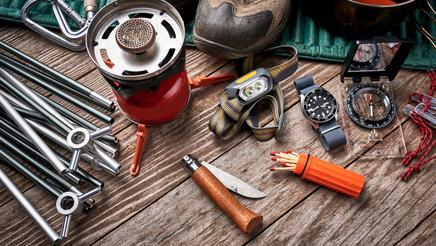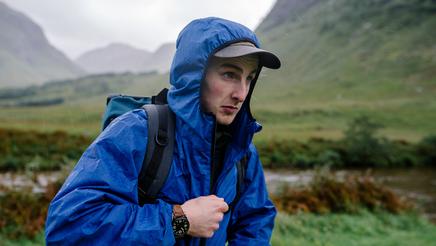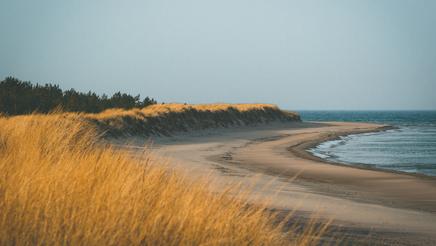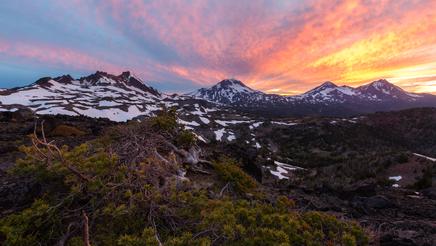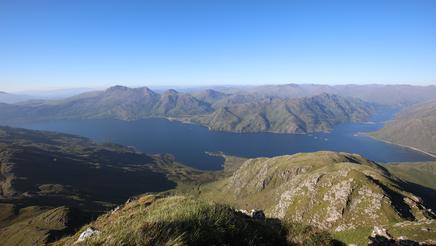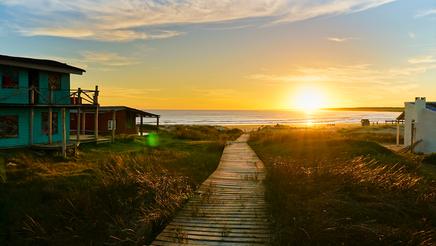Forget designated campsites – wild camping is all about going off the grid. This guide covers what you need to know before your adventure
Heading into the wilderness for a few days with nothing but a backpack and a map can be a profoundly rewarding experience. Away from the stresses of daily life, there’s ample opportunity to slow down, connect with nature and revel in the exhilarating beauty of your surroundings. If you do it properly, you can camp almost anywhere you choose to. Sounds intriguing? Here’s all you need to know.
Plan ahead
Laws around wild camping vary from country to country. In Sweden, the Freedom to Roam (Allemansrätten) or Outdoor Access Rights gives you the right to explore the country freely. It allows you to walk, cycle, ride, ski or camp on any land except private gardens, within 70m (230 ft) of a dwelling house or cultivated land. You can set up your tent, paddle in a lake and collect mushrooms and berries to snack on, as long as you are respectful to the environment. Apart from Sweden, Finland and Norway have a similar law, which means that the general public can make the most of the beautiful countryside, responsibly.
Wild camping enthusiasts can also embrace the three Baltic states (Estonia, Latvia and Lithuania), which have good public access laws. Generally, these countries allow wild camping on government lands. We recommend checking if the particular area you intend to camp on has some restrictions or not.
In densely populated European countries like England, Germany, France and Italy, the freedom to wild camp is restricted. It’s best to spend the night at a designated campsite if you’re travelling through one of these destinations.
In the US, you can generally set up camp on any land managed by the Forest Service of Bureau of Land Management (BLM). However, camping in national parks is strictly controlled – meaning you need to pay a fee and camp in designated places.
Leave no trace
The main rule of wild camping is to be respectful of the environment, and this means not making an impact on your surroundings. If you need to move any small rocks, put them back when you leave (or ideally, camp somewhere else), and cooking should be done on an outdoor stove. If the site allows you to light a fire, remove a square of turf to make a fire pit and fill it in again afterwards.
When it comes to human waste, the right thing to do is to bury it and check that you’re more than 50m (164 ft) from a water source. Don’t bury toilet paper – take it with you. Wet wipes are not environmentally friendly, and if you can’t live without them, you probably shouldn’t consider camping in the wild.
Be prepared
Having the right kit is critical, so you can be prepared for all weather eventualities and experience an enjoyable trip.
Essentials include:
- A lightweight tent (or if you want to get close to nature, a bivvy bag – a waterproof, breathable sack that protects the whole body from the elements and takes up less space)
- A sleeping bag
- An outdoor stove
- Matches
- Bowl, mug and spoon
- Swiss Army knife
- Water-bottle with a fitted filter
- Head torch
- A trowel
While a GPS is useful, it can run out of battery – keep things old school and take a compass and a map. Clothing wise, a waterproof jacket and trousers, several pairs of socks, plus a hat and gloves are vital. Don’t forget to bring a sufficient amount of food to last throughout your journey. Camping shops sell a wide range of dried foods and hi-tech meals that can be heated by simply adding cold water. If you’ve got the space, why not take a few luxuries? There’s nothing nicer than sipping on whiskey out of a hip flask by the fire.
Expect the unexpected
Wild camping isn’t all songs around the fire and naps in the hammock; without doing the right preparation, it can be wildly dangerous.
One of our colleagues had her tent torn by a strong gust in Monument Valley in Arizona, encountered a bear in Oregon, and was severely bitten by mosquitoes in an Estonian forest.
If this is your first time wild camping, you should consider a few things:
- Check the weather before your trip – make sure you know how to deal with extreme heat, cold nights, thunderstorms, lightning storms, strong winds and flash floods.
- Be prepared to deal with insects – while mosquitos are prevalent, watch out for bees, spiders and ticks too.
- Keep an eye on outbreaks – every year, cases of the Hantavirus illness (a severe, sometimes fatal, respiratory disease) are reported in rural areas of southwest America with some years more severe than others. It’s wise to avoid areas exposed to rodent urine, saliva or droppings. Don’t touch the deceptively adorable deer mouse, as they are the primary carrier of the virus.
- Learn how to forage for food – even if it looks delicious, it might not be edible – only pick berries and mushrooms that you know are safe to eat.
- Avoid dirty water – stream water may appear clean, but it can make you very sick. Bring some Chlorine Dioxide tablets or a filter to prevent dehydration and an upset stomach.
Five of the best wild camping destinations
Gotland, Sweden
The Freedom to Roam in Sweden makes it possible to wild camp, and one of the best spots is Gotland, a UNESCO-listed island in the Baltic Sea. With 800km (497 miles) of coastline, choosing where to lay your head is like choosing your favourite sweet in a candy store. We recommend staying a couple of nights in Ljugarn, a lovely seaside village with a long, flat sandy beach. Then travel to Fårö (a neighbouring island connected by ferries) and check out Sundersand, a wide crescent beach that’s perfect for barefoot strolls.
Archipelago National Park, Finland
The Everyman’s Right or Jokamiehen Oikeudet in Finland is similar to Freedom to Roam in Sweden. This right allows anyone to explore freely, provided that you leave no trace, stay away from private property and keep out of restricted areas.
Located 60km (37 miles) from Turku, the oldest town in Finland, Archipelago National Park has a rugged shoreline with pockets of idyllic coves where seals and seabirds coexist. Spend an afternoon exploring this incredible underwater nature trail where you can snorkel, dive and paddle alongside fish and blue mussels in the seagrass meadow.
The Three Sisters Wilderness, Oregon, USA
To hike the entire 4,270km (2,653 miles) of the Pacific Crest Trail takes some serious planning, but you can walk a section of it in the Three Sisters Wilderness in Oregon. Named after the Three Sisters volcanoes, this area is packed with Instagram-worthy shots of alpine meadows and glacial lakes.
The South Sister (aka Charity) is Oregon’s third-tallest mountain at 3,157m (10,358 ft) and is relatively easy to climb. At the summit, you’ll find the crystal clear Teardrop Pool, which is the highest lake in Oregon.
This wilderness is blanketed with morel mushrooms in May and huckleberry in June and July. During autumn, look out for highly prized fungi like chanterelles, porcini and lion’s mane. In Oregon, you can pick up to five gallons of fruits, mushrooms and other edibles per person per day, giving you ample fuel for your journey.
Knoydart, Scotland
Scotland’s Land Reform Act of 2003 allows you to camp pretty much anywhere in the country, providing simple guidelines are respected, like you can’t camp on enclosed or cultivated land, near houses or sensitive historical sites. As a result of this act, there are many picturesque and remote spots available. The Inverie on the Knodart Peninsula in the Scottish Highlands is the ultimate piece of paradise. If you fancy a refreshment after your travels, check out Britain’s most remote pub, the Old Forge.
Cabo Polonia, Uruguay
A hippie stronghold in Uruguay, Cabo Polonia sits on a dramatic sweep of coastline overlooking the South Atlantic Ocean. It has no road access – you have to walk 7km (4 miles) from the nearest road (Highway 10) or take a 4×4 to cut across the vast sand dunes.
The lighthouse is the only structure in the village powered by the national grid, so everyone else lives without electricity or relies on a few generators. There’s no running water either, so you have to collect rainwater or fetch it from nearby wells. If you’re looking for a place where you can truly be ‘out of office’, set up your tent in Cabo Polonia.
If you liked this article, you might also like:
